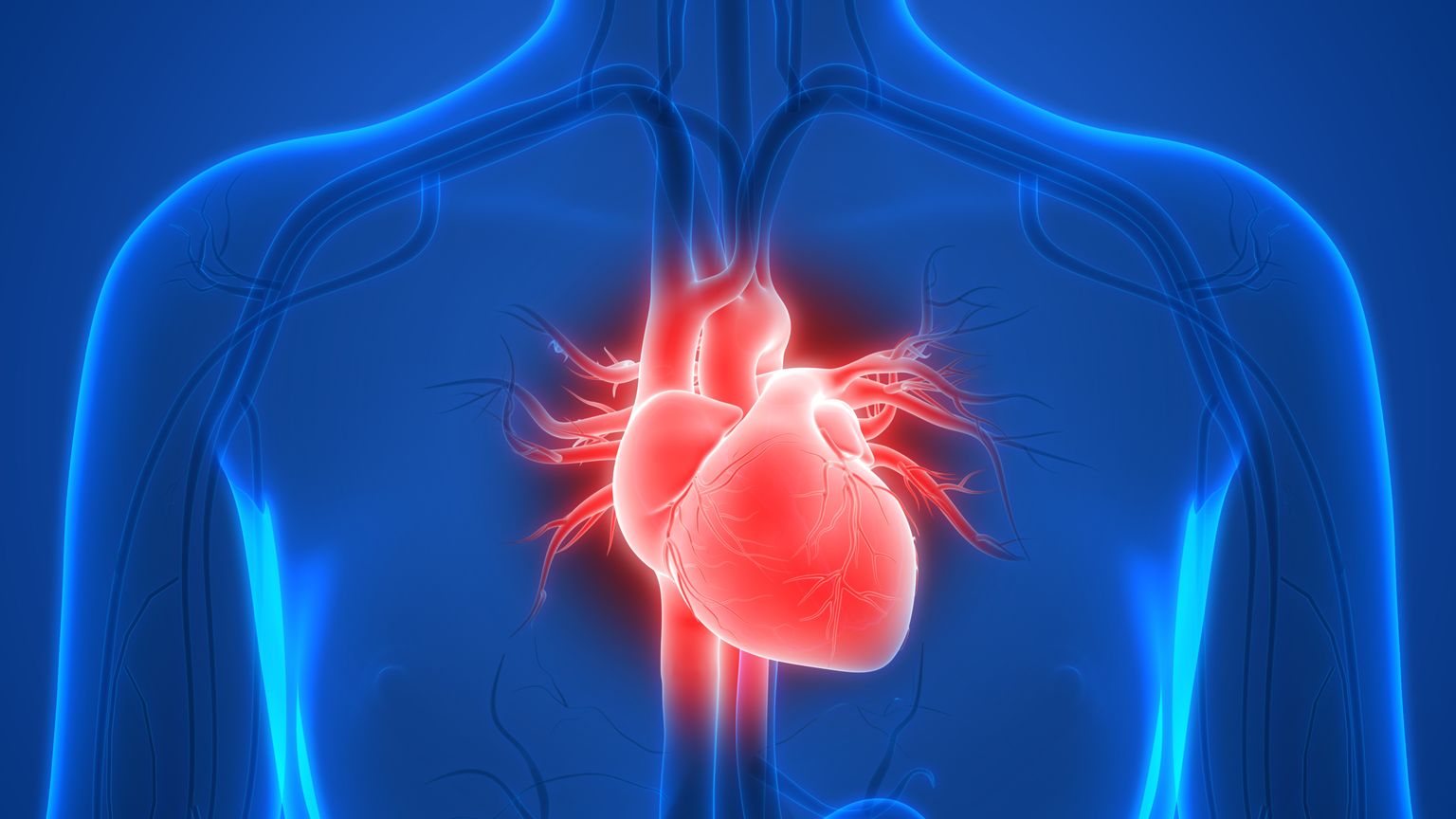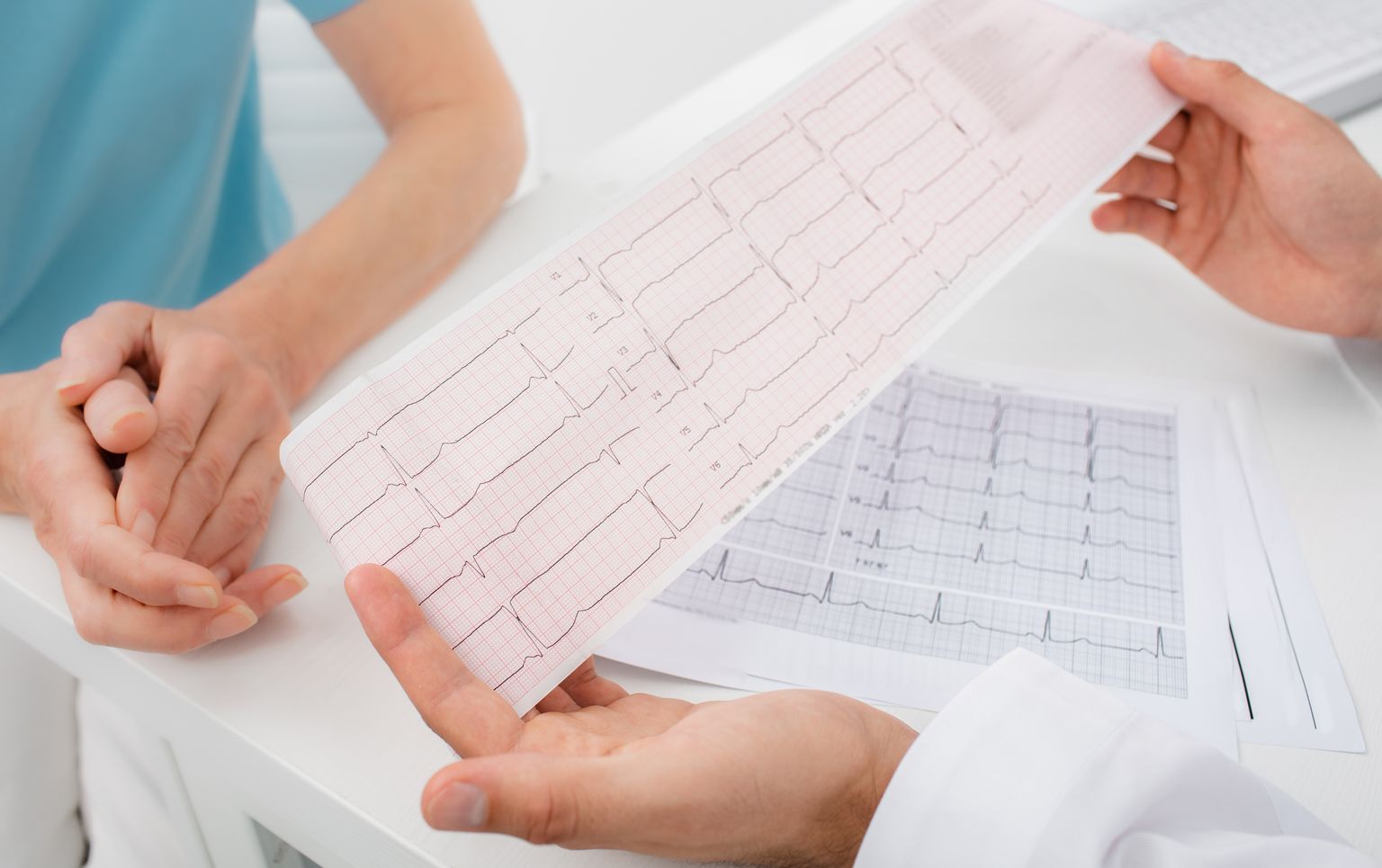A heartbeat occurs when the heart muscle contracts under the influence of an electrical signal (excitation). The electrical signals required for this are formed and transmitted by special cardiac muscle cells of the conduction system. The electrical voltage is generated by the different distribution of charged particles (electrolytes) inside and outside a cardiac muscle cell. A complex flow of electrolytes in and out (action potential) allows the signal to be transmitted through the conduction system.
The signal or rhythm normally originates in the sinus node, which is located in the right atrium of the human heart. There, specific pacemaker cells, which have their own clock, generate 60 to 80 electrical impulses per minute and transmit this to the conduction system. The rhythm is transmitted from the sinoatrial node via the node connecting the atria and ventricles, the AV node. From there, the impulse is transmitted to the His bundle further into the two ventricular legs (tawara legs) and up to the apex of the heart. From the apex of the heart, the tawara legs branch into many thin fibers (Purkinje fibers) that terminate in the myocardium.
Under the influence of the electrical signals, the muscles of the heart contract and pump blood into the systemic circulation. Then the heart muscle cells relax again until the next impulse is sent out by the sinus node. The basic frequency of the sinus node is about 60-80 beats per minute. However, this can increase significantly during exercise or stress. The subsequent sections of the conduction system also have a rhythm of their own, but it is slower than that of the sinus node, which is why they only take over when the sinus node fails.
The electrical rhythm of the conduction system triggers muscle contraction and thus the heartbeat. However, electrical excitation and muscle contraction are strictly speaking two different processes. In rare cases, electrical rhythm and muscle contraction can also occur decoupled from each other (pulseless electrical activity).
If the sinus node cannot generate the electrical rhythm appropriately, if the rhythm is not transmitted or if other impulses occur in the heart, we speak of cardiac arrhythmias. Both "dangerous" and "less dangerous" types exist.





